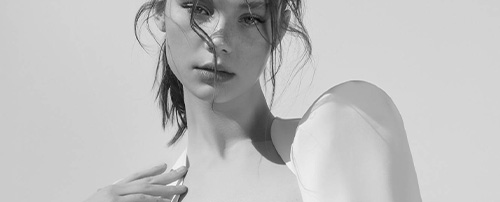Hello there, lovebirds! Are you excited about your upcoming wedding and wondering what to wear on your big day? Let’s journey through time and see how bridal fashion has changed.
From corsets to crop tops, tiaras to veils, and white to colourful, there’s a style for every taste and personality. Join us in discovering iconic bridal looks that have inspired generations of brides and designers alike.
Historical Highlights
Bridal fashion has a long and fascinating history that reflects different cultures and periods’ values, beliefs, and aspirations. For example, in ancient Greece and Rome, brides wore long white or yellow wool tunics, symbolizing purity and fertility.
In medieval Europe, brides often wore richly embroidered gowns with a high waistline and a long train, representing their social status and wealth. In the Renaissance, brides favored colorful dresses with puffed sleeves and intricate details inspired by exotic fabrics and patterns from Asia and the Americas.
Queen Victoria set the trend for white bridal gowns in the Victorian era when she married Prince Albert in 1840 as a sign of innocence and grace. Her dress, made of satin and lace, featured a full skirt, a fitted bodice, and a long train, which became the epitome of romantic bridal style.
In the Edwardian era, brides preferred more elaborate and feminine dresses with lace, tulle, and beading. Some famous brides who influenced their time include Mary Queen of Scots, who wore a black velvet gown with white silk sleeves in 1565.
Queen Victoria popularized the white wedding dress; Jacqui Kennedy wore a gown by designer Ann Lowe for her 1953 nuptials, and Grace Kelly donned a lace gown and veil made by Hollywood costume designer Helen Rose when she married Prince Rainier III of Monaco in 1956.
Some common themes and trends across centuries include modesty, purity, luxury, symbolism, and nationalism.
Modern Wedding Dress Masterpieces
Bridal fashion has come a long way since the early days, thanks to the creative vision of designers and the changing tastes of brides. In the 20th century, bridal fashion started diversifying and experimenting with different fabrics, silhouettes, and colors. The 1920s saw the emergence of flapper-style dresses with dropped waistlines, beading, and feathers.
Simple and practical dresses marked the 1930s and 1940s due to the effects of the Great Depression and World War II. The 1950s brought back full skirts, tulle, and lace as a nostalgic tribute to the past. In the 1960s, the influence of the counterculture and the feminist movement introduced new shapes and styles, such as minidresses, pantsuits, and bohemian dresses.
The 1970s and 1980s were characterized by glitter, glam, and excess, with voluminous sleeves, ruffles, and bows. The 1990s marked a return to minimalism and understated elegance, with slinky slip dresses and refined details.
The 2000s and beyond have seen a mix of old and new influences, with global trends and social media shaping how brides express themselves. Some iconic bridal looks from the past few decades include Princess Diana’s frilly dress, Kate Moss’s bohemian chic, Solange Knowles’s caped jumpsuit, Emma Stone’s pantsuit, and Lily Allen’s 60s-inspired frock.
Recent celebrity brides and their signature styles include Meghan Markle’s minimalist gown, Hailey Bieber’s Grace Kelly-inspired dress, and Katy Perry’s quirky veil.
Personal Wedding Dress Picks
Choosing the perfect bridal outfit is a fun and challenging task that requires patience, creativity, and confidence. Here are some useful suggestions to make the most of your bridal fashion journey:
- Know your body shape: Whether you are an hourglass, pear, apple, or banana, there’s a dress that can flatter your curves and highlight your best features. Choose a wedding dress that fits you well and makes you feel comfortable and empowered.
- Set a budget: Wedding dresses can range from affordable to exorbitant, depending on the designer, the style, and the material. Decide how much cash you want to spend and stick to it, or explore alternative options such as renting, buying pre-owned, or going vintage.
- Think about the theme: If you have a specific theme in mind, such as vintage, beach, garden, or rustic, you can choose a dress that complements the ambience and the decor. Consider the color, the fabric, and the details that match your vision.
- Add your personal touch: Don’t be afraid to be creative and customize your dress with accessories, accents, and embellishments that reflect your personality and style. You can add a belt, a veil, a jacket, or jewelry with sentimental value or special meaning.
- Go beyond tradition: If you feel like breaking the rules and experimenting with daring and unconventional styles, you can opt for a jumpsuit, a separate outfit, a colored gown, a printed dress, or a textured fabric. Remember this; there’s no correct or incorrect way to be a bride as long as you feel confident, beautiful, and happy.



